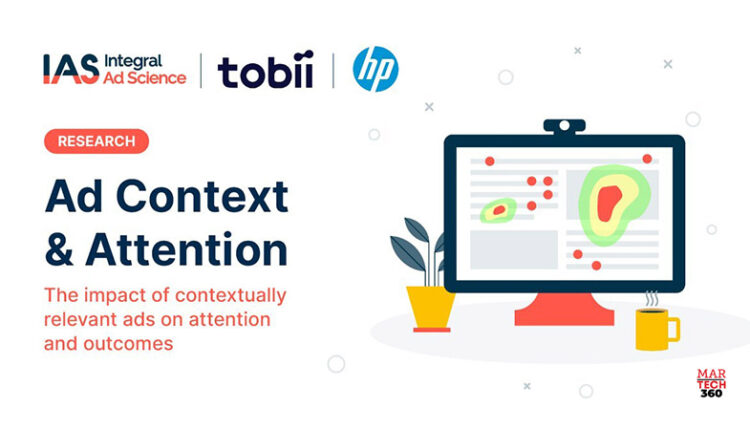New IAS Data Shows Contextually Relevant Ads Drive Attention, Leading to Significant Increases in Brand Favorability and Purchase Intent
Latest research with Tobii’s eye tracking technology highlights the impact of contextually relevant ads on consumer attention and brand outcomes
Integral Ad Science, a global leader in digital media quality, today released ‘Ad Context & Attention‘, a study conducted in partnership with Tobii, the global leader in eye tracking and pioneer in attention computing, to understand how display ads perform when in context versus out of context. The research indicates increased consumer attention for contextually relevant ads leads to greater purchase intent and brand favorability. The results present persuasive evidence of contextual targeting’s ROI in a brand’s advertising strategy.
Through the use of Tobii’s eye tracking technology, researchers were able to detect and follow consumer eyesight when exposed to the same ad design in different content environments. The number of times and length of fixation on each element of the page revealed information on the impact that contextual relevance has on brand engagement, favorability, and memorability.
“With a cookieless future on the horizon, marketers are seeking alternatives to maintain and improve their advertising ROI. Our new report shows that desired outcomes can be significantly influenced through contextually relevant ad placements, which have the capacity to influence audience recall and overall response,” said Tony Marlow, CMO, IAS. “There is a massive opportunity for brands to use tools like IAS’s Context Control to amp up the power of their campaigns and affect the bottom line.”
“Tobii’s partnership with Integral Ad Science demonstrates the importance of eye tracking to better understand consumers’ attention in a fast-paced market,” said Joanna Parker, VP of Americas, Tobii. “This research provides IAS with a deeper understanding of how consumers engage with ads when shown in different environments. And we pride ourselves on working with partners who innovate and bring new information to the industry.”
The study tracked consumers’ attention to compare the effectiveness of one display ad placed within two different content environments. The following findings emphasize the impact of contextual relevance:
- Contextual targeting strategies yield stronger consumer attention – The in-context ad was the first page element consumers noticed. It took just .4s for consumers to notice the in-context ad vs. 1.0s to notice the out-of-context ad when viewing the article.
- Contextually relevant ads drive outcomes, significantly boosting brand favorability and consumer purchase intent — Purchase intent was higher among consumers who viewed the in-context ad, increasing by 14%. Additionally, the In-context ad generated higher brand favorability among participants, resulting in a 5% increase when compared with consumers viewing the out-of-context ad.
- In-context ads generate higher memorability and increase brand recall and awareness among consumers — Consumers were four times more likely to remember a brand, unaided, after seeing an in-context ad versus an out-of-context ad. In general, in-context display ads were more likely to be considered interesting, easy to read, clear and informative.


Comments are closed.